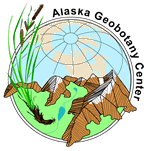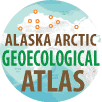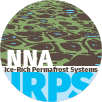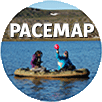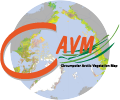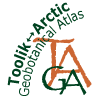
Circumpolar Arctic Vegetation Mapping Project
Resolution of the Second International Workshop on Circumpolar Vegetation Classification and Mapping
Tromsø, Norway - June 6, 2004
Whereas, vegetation is critical to all aspects of terrestrial systems including the flux of carbon and nutrients to streams and the Arctic Ocean, trace gases to the atmosphere, and heat to the permafrost, and is an essential component of human subsistence activities and wildlife habitat, and is variously sensitive to a multitude of anthropogenic disturbances; and
Whereas, the group of international arctic vegetation scientists assembled here has special geobotanical expertise that lends itself to the classification, mapping, and analysis of climatic and other environmental controls on vegetation patterns and processes, and
Whereas, there is a lack of terrestrial vegetation components in many science initiatives now being proposed for the International Polar Year (IPY),
Be it resolved that the undersigned group will take the following steps to assure that vegetation is properly considered in these initiatives:
- Seek representation to be involved on various arctic science planning committees, including ICARP II (International Conference for Arctic Research Planning II (2005)), SEARCH (Study of Environmental Arctic Change), IPY, etc. to promote multi-disciplinary international studies of Arctic vegetation and contiguous boreal systems.
- Provide critical input into site selection for international collaborative inventory and monitoring projects, including transects and networks of sites.
- Provide the essential vegetation characterization at these sites.
- Provide the essential spatial databases for vegetation and other geobotanical variables, at multiple scales at these sites.
- Develop a monitoring program that achieves a fuller understanding of the changes in vegetation composition and structure due to climate change, and anthropogenic changes through time.
- Assure that we achieve an understanding of the vegetation and changes along the full Arctic climate gradient in each bioclimate subzone over the long term, especially in the extreme polar deserts, transitional ecotonal areas, and sites that may be especially sensitive to change, such as riparian areas, wetlands, snowbeds, mountain tops, and areas of high biological and microclimatic diversity ("hot spots"), and also sites that are currently affected by anthropogenic influences.
Furthermore, we will do the following:
- Build on the Circumpolar Arctic Vegetation Map (CAVM) by identifying, ranking and mapping regions of high diversity/rareness/value; and their vulnerability to global and local climatic change and anthropogenic impacts, i.e. "Arctic hot spots";
- Analyze the CAVM in conjunction with other circumpolar databases, such as the soil and permafrost maps, and time series remote sensing information;
- Develop an annotated list of vegetation-types (syntaxa) for the Arctic
- Extend the CAVM to a spatial domain that is useful for analysis of change across the treeline, including the boreal forest region, in collaboration with other international mapping programs such as the International Geosphere Biosphere Programme (IGBP);
- Extend the mapping and characterization to multiple scales at selected sites across the Arctic;
- Develop a web-based geographic information system (GIS) for analysis and distribution of mapped data; and
- Emphasize the use of the data for educational, training and outreach purposes and involving other Arctic groups including the Arctic Council, the International Arctic Science Committee (IASC), the Arctic Research Commission of the United States, and other government agencies, non-governmental organizations, and scientific research and conservation groups, including the Circumpolar Arctic Fauna and Flora project (CAFF), International Union for the Conservation of Nature and Natural Resources (IUCN), World Wildlife Fund (WWF), Circumarctic Environmental Observatory Network (CEON), and the Circum-Arctic Terrestrial Biodiversity initiative (CAT-B).
